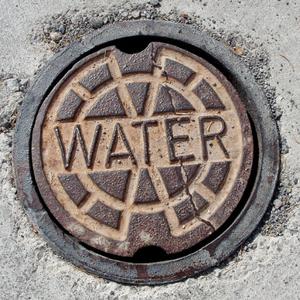CybersecurityMcAfee releases 2012 cyber threat predictions
The cyberthreats organizations and individuals are likely to face in 2012 will resemble those they faces in 2011, only more so; among the increased threats: attacks on critical infrastructure, mobile devices and consumer electronics, and politically motivated attacks

McAfee expects attacks on utilities to be the number one threat or 1012 // Source: q1labs.com
McAfee has released its list of the major cybersecurity threats organizations and individuals are likely to face in 2012. The company says that for the most part, 2012 looks like it will contain an elevation of many of the threats recently seen to be gaining momentum. Here are the predictions:
1. Disrupted utilities like water and power: earlier in the year a Southern California water systems hired a hacker to find vulnerabilities in its computer networks. The hacker had no trouble seizing control of their equipment and adding chemicals to the drinking water, and do all this in day.
McAfee says that many industrial and national infrastructure networks were not designed for modern connectivity, making them vulnerable. “We expect attackers to take advantage of the situation in 2012, if only for blackmail or extortion, but in a worst-case scenario public utilities such as water and electrical services could be disrupted.”
2. Affecting political change through hacktivism: hactivism is the use of computers or computer networks to protest or promote political change. A great example of this is the “Anonymous” group which was active last year doing high profile activities such as briefly taking down New York Stock Exchange’s Web site in support of the Occupy Wall Street protests.
McAfee says it expects more organized digital disruptions to come in 2012.
3. More spam in consumers’ inboxes: the new trend in spamming is sending e-mails from advertising companies that obtain their e-mail lists through shady but legal means. They may buy the lists from companies that are going out of business or partner with other advertising entities or mail-list providers without taking into account privacy policies.
McAfee notes that spammers can do this because under the U.S. CAN-SPAM Act advertisers are not required to receive consent before sending advertising. Since this method is cheaper and less risky than bombarding consumers with spam from networks of compromised computers, this activity is likely to continue to grow through 2012, possibly resulting in more spam in inboxes.
4. Malware aimed at mobile phones: Cybercriminals are now testing their creativity with mobile malware in the form of malicious applications. Once downloaded, they can deliver a variety of ads or even send expensive text messages from your phone. They are using botnets — a collection of compromised computers that have traditionally been used to do things like send spam — to target mobile platforms.
McAfee says that mobile malware is not common now, but that it expects these attacks to increase through next year.
5. Compromised cars, GPS trackers, and other devices: cybercriminals are now targeting embedded operating systems or even hardware to gain control of everything from cars to GPS trackers and medical equipment. They can do this two ways — either through infiltrating the device when it is being manufactured or through the easier route of tricking users into downloading malware that can penetrate the “root” of the system.
McAffee expects hackers to become more effective in 2012 and beyond, potentially affecting systems such as consumer electronics.
6. Cyberwar: there has recently been an increase in high-tech spying and other cyber techniques to gain intelligence, even if on a small scale. Many countries are now realizing the crippling potential of cyberattacks against critical infrastructure, and realize how hard they are to defend. This dangerous possibility is out there.
